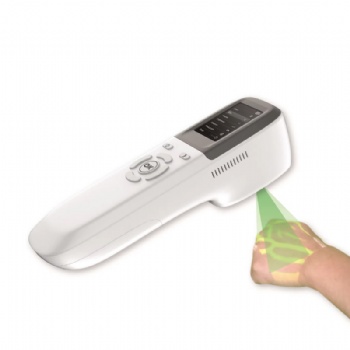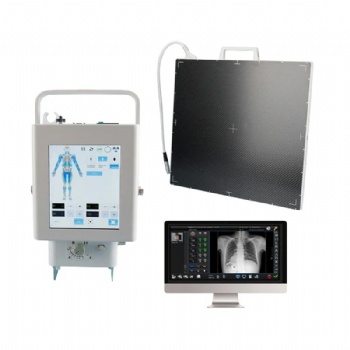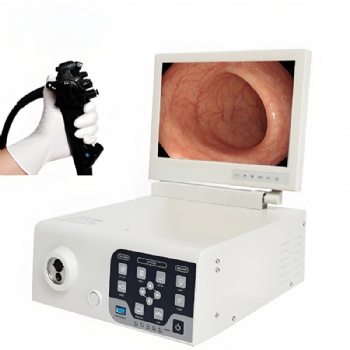News
Introduction to Basic Knowledge of Laparoscopy
Chapter One: The Origin of Laparoscopy
Medical endoscopes refer to medical instruments that enter the human body through various channels to observe the internal condition, with the primary benefit of being minimally invasive. Some endoscopes also have therapeutic functions, such as cystoscopes, gastroscopes, ventriculoscopy, bronchoscopes, and laparoscopes. This article focuses on one of these types—laparoscopy.
In 1795, German physician Philipp Bozzini created the "Lichtleiter" (German for "light conductor"), a device used to explore various orifices and cavities of the human body, marking the origin of endoscopy. Early endoscopes entered the body through natural orifices, such as urinary bladder examinations, gynecological cavity examinations, and ENT checks.
The exploration of the abdominal cavity using endoscopes began in the early 20th century. In 1901, on Otto performed a posterior vaginal fornix incision and used a head mirror to illuminate, conducting the first pelvic examination of a pregnant woman with a cystoscope, becoming the first expert in this field. In 1902, Kelling reported to the German Society of Biomedical Sciences about using a cystoscope to examine the esophagus and stomach of humans, as well as the abdominal cavity of dogs. It wasn't until 1910 that Swedish physician Jacobaeus first reported using a laparoscope to examine the human abdominal cavity, thoracic cavity, and heart, completing the first true laparoscopic examination in history. Due to the outstanding contributions of von Otto, Kelling, and Jacobaeus in clinical applications of laparoscopy, they are referred to as the "Fathers of Laparoscopy."
In 1960, KARL STORZ invented the first medical cold light source, bringing illumination to endoscopic imaging. The invention of the HOPKINS rod lens system in 1964 was a milestone in endoscopic development, offering advantages such as ultra-wide angles, large fields of view, no spherical distortion, and high brightness. By the 1980s, with the emergence of endoscopic imaging systems, the first laparoscopic cholecystectomy was successfully completed, marking a new chapter in endoscopic treatment.
On February 19, 1991, Xun Zuwu from the Second People's Hospital of Qujing, Yunnan, performed the first laparoscopic cholecystectomy in mainland China using KARL STORZ equipment, marking the country's first laparoscopic surgical operation. Subsequently, laparoscopic techniques proliferated across the country, closely linked to the development of surgical instruments and equipment, continually expanding the scope of surgical procedures from the treatment of benign lesions to the removal of malignant tumors. Laparoscopy has become the gold standard for diagnosing and treating various diseases.
Chapter Two: Basic Components of the Laparoscopic System
A laparoscopic system generally consists of three parts:
Equipment: This can be further divided into imaging systems and surgical auxiliary devices. The imaging system includes the camera host, camera, cold light source, and monitor, which are the core of the endoscopic system responsible for image illumination, acquisition, processing, transmission, and display. Surgical auxiliary devices include insufflators, electrosurgical devices, and irrigation perfusion pumps, which are selected based on surgical needs.
Laparoscope: The main function of the laparoscope is to project images from inside the body to the outside through a complex optical system. Laparoscopes can be categorized into optical scopes and electronic scopes. Optical scopes offer the highest clarity and are commonly used in laparoscopy, although some manufacturers produce electronic laparoscopes developed from electronic soft endoscopes (like electronic gastroscopes and colonoscopes). The diameters of laparoscopes are typically 10mm and 5mm, with working lengths of 31cm, 42cm, and 50cm, with the most commonly used being the 10mm diameter and 31cm working length. The visible range of the laparoscope is defined by its field of view, and the angle between the axis of the laparoscope and the bisector of the viewing angle is termed the viewing angle. Laparoscopes come in 0°, 30°, 45°, and 70°, with the most commonly used being the 0° and 30° scopes. The 30° scope can be rotated to adjust the field of view, effectively exposing structures like the abdominal wall and pelvic area.
Instruments: There are many types of instruments, commonly including graspers, scissors, needle holders, trocars, and electrocautery hooks, which can be selected based on surgical needs and operating habits. Surgical instruments extend the doctor's hands, so well-designed instruments can significantly shorten surgical time, reduce fatigue, and allow for more precise procedures. The usability of instruments is judged by their craftsmanship, ergonomic design, comfort in handling, stability in grasping, sharpness in cutting, and good tactile feedback. When using instruments, it is essential to use them for their intended purpose; for instance, graspers are suitable for tissue separation but not for holding. Improper use can affect performance and shorten instrument lifespan. Instruments are also categorized based on the energy they use, including bipolar, monopolar devices, ultrasonic knives, and non-energy instruments.
Categories
Contact Us
- +86-18018467613
- +86-13357930108
- info@82tech.com




